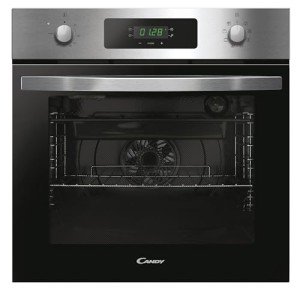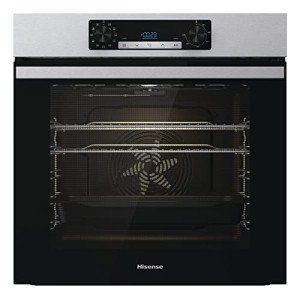What Is a single oven gas Oven Electric Fan?
single oven electric fan (official site) is a form of cooking appliance that makes use of an internal fan to distribute hot air evenly around the oven cavity. This helps to remove hot spots and improve overall cooking results.
Does your oven have fans? If yes, single oven Electric fan does it make certain areas of your oven more hot or colder than others for a set temperature?
Functions
Oven functions (also known as cooking modes or setting) provide a variety of pre-programmed options to accommodate many different recipes and cooking requirements. These features dictate how the heating elements or the fan inside the oven function, making it easier to get exact and consistent results.
Most ovens are what's known as "fan assisted" which means that when the oven element heats up there is a fan which circulates hot air around the oven cavity to aid in cooking food. This function reduces preheating times and provides an even cooking experience. In an oven, there are typically two fans: one that circulates hot air for cooking, and another one that cools the oven. The cooling fan is controlled by a thermoelectric switch. It is turned on automatically if the thermostat knob isn't set to off.
Functionality for Convenience
Ovens come with a variety of features that make it easier to use them, including the defrost function which uses low temperatures to thaw frozen food without cooking it. This speeds up the defrosting process and prevents dishes from becoming stale or dry. The reheating feature is beneficial as it employs the gentle heat to reheat foods, helping to retain their flavour and texture.
A child lock can be used to secure the control panel to stop children from changing the settings or getting access. The minute minder function is another useful feature that can be used independently of the cooking functions. It shuts off the oven when the specified amount of time has passed. This allows you to not forget to turn off the oven.
A multi-functional oven is great for those who like to cook various dishes on a regular basis. A fan oven with a roast function lets you to cook a variety of meats and vegetables on multiple racks at the same time which makes it ideal for family meals or Sunday lunches. meals. There are also grill and bake functions which can be great for adding a golden top to casseroles, potatoes and cakes.
Design
Electric single oven gas ovens that are built-in are available in different sizes and styles that can meet your kitchen's requirements. Certain models include additional features such as self-cleaning or a delay start. These functions can be a great way to save time and effort in your kitchen. Read reviews to get an idea of how these ovens are rated by other users.
A fan oven comes with a built-in air circulator which allows for more even cooking and quicker results than traditional ovens. This is especially useful for cooking dishes with a high fat content, such as roasts and pies. The control panel will tell you if the oven is a fan-model. Look for a three-pronged fan icon that is surrounded by the shape of a circle. The conventional ovens are usually marked differently and might not have any fan functions at all.
Blomberg's A-rated integrated single oven electric cooker 60cm oven comes with a capacity of 71L. It is designed to perform as well as looks. The oven comes with a variety of options including grill and fan assisted cookery. It also features a light-only mode to make cleaning simpler. It also comes with an easy-to-use programmable clock/timer with a touch control and a simple to clean enamel interior.
Energy Efficiency
 In terms of household appliances, ovens contribute relatively little to the overall usage of electricity when compared to devices like fridges and air conditioners. The type of oven used and the cooking method used still have an impact on the energy cost. A majority of the latest single ovens are more energy-efficient than older models. This helps reduce energy consumption and save money on your energy bills.
In terms of household appliances, ovens contribute relatively little to the overall usage of electricity when compared to devices like fridges and air conditioners. The type of oven used and the cooking method used still have an impact on the energy cost. A majority of the latest single ovens are more energy-efficient than older models. This helps reduce energy consumption and save money on your energy bills.
The primary difference between a conventional and a fan oven is that a conventional oven is one heating element, whereas a fan oven has both an element for heating and a fan that circulates hot air around the food. With the help of a fan you can lower the temperature and conserve energy. Additionally, a fan can cut down on baking times.
 Another way to ensure you're getting an oven electric fan that's as energy efficient as possible is to search for one with a brushless DC motor. This type of motor is more efficient than previous, non-brushless models. It also reduces the noise levels.
Another way to ensure you're getting an oven electric fan that's as energy efficient as possible is to search for one with a brushless DC motor. This type of motor is more efficient than previous, non-brushless models. It also reduces the noise levels.
You can find the energy rating on the appliance's manual or somewhere elsewhere. This number will give you an idea of the amount of energy the oven uses when in operation. You can then compare this number to the cost per kWh of your local electricity tariff, which can vary widely depending the location you live in.
There are several aspects that affect the power consumption of an oven, including the type of food you're cooking, its temperature setting, and how long you cook it for. The cooking process can affect how much electricity is consumed, as can preheating the oven prior to use.
To maximize the efficiency of your oven, turn it off after you've finished using it and monitor your use. Smart meters can provide you with precise information on how much the electricity used by your appliances costs. You can also look into other cooking methods that require less energy.
Installation
Whether you're installing an electric fan oven for the first time or replacing an existing one there are a few expenses to take into consideration. These range from removing and disposing of the old appliance to the installation or upgrading of outlets and utilities lines. If the new appliance requires vent hoods you might need to install one. The cost of labor varies between contractors, so you should shop around to find the best price.
It's easy to tell the oven that you bought has a fan since it's likely to be marked as such on the control panel. Its fan circulates air continuously within the oven chamber. This lets it reach temperature quicker and spread heat evenly. Conventional ovens may have an additional symbol on the control panel or no fan icon at all.
Before you employ an electrician to install your new single gas oven oven electric fan, take the time to look at how the unit was wired in your house prior to. It will be easy for a professional electrician to connect the unit to your wiring system if the older one plugs directly into a power socket. However, single Oven electric fan if the previous oven was wired to a switchbox or circuit breaker then it will be more difficult. If the new oven has more powerful than the older one, you'll have to ensure that your circuit breakers are able to handle the extra voltage. Also, you'll need to ensure that the cables you use are long enough.
The price of installation will differ based on the location of your kitchen in your home. A freestanding unit that can be easily moved from room to room will cost less than a wall mounted unit that requires cutting into cabinets or counters to install. Additional costs could be charged if you have to run or add electrical or gas lines, or ventilation ductwork.
If you are replacing an appliance that's already in place, an electric oven installation isn't going to cost you more than $155 to $70. Installing a vent hood and adding a new outlet in the kitchen will cost about $300.
